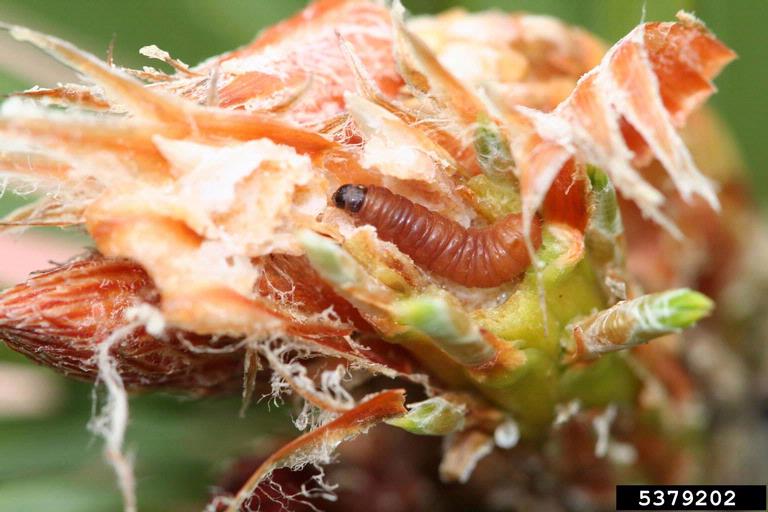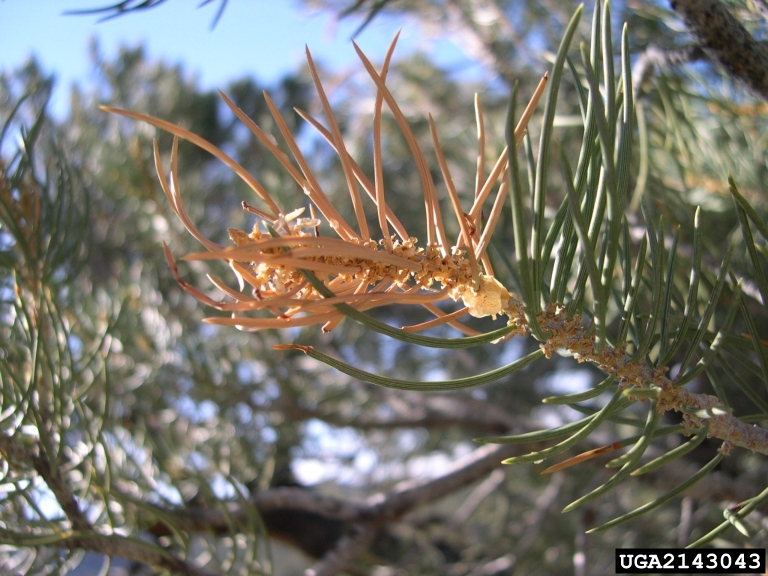Integrated Pest Management
Pine Tip Moths
Eucosma; Diorctria; Petrova; Rhyacionia
Pest Description
- adults: wingspan ~ 3/4 – 1 inch; wings held tent-like over back; color variable
- larvae: 1/2 – 3/4 inch; dark brown to orange red with dark brown head capsule and thoracic plate
- pupae: ~ 5/16 – 1/2 inch; yellowish brown to dark brown, depending on age
- eggs: nearly flat, green turning to orange red and laid on needles, needle bases or bud scales
Host Plants, Diet & Damage
- pine, spruce, Douglas-fir and arborvitae
- damage is primarily aesthetic
- feed on buds, twigs, terminal shoots; some feed on cones
- bore into and kill twigs and terminals causing wilting, dead tips and deformation; flagging/crooking
- resin, frass and webbing may be present at damage sites
- damage typically most severe in nursery setting
Biology, Life Cycle & Damaging Life Stage
- overwinter as larvae or pupae on branches, trunks, within galleries or soil, or debris next to host
- emergence or activity begins in early spring prior to or around budbreak;
- some species emerge later
- depending on species, some larvae will leave host tissue in mid- to late
- summer to find overwintering sites
- one generation per year
- larvae are the damaging stage
IPM Recommendations
- Manage trees to improve or maintain overall health.
- Minor damage does not require management.
- To prevent damage in areas where these moths are present, apply an insecticide (pyrethroid) to foliage.
- Identify tip moth species to determine treatment timing. For most species, treatment is just prior to or just after budbreak.




